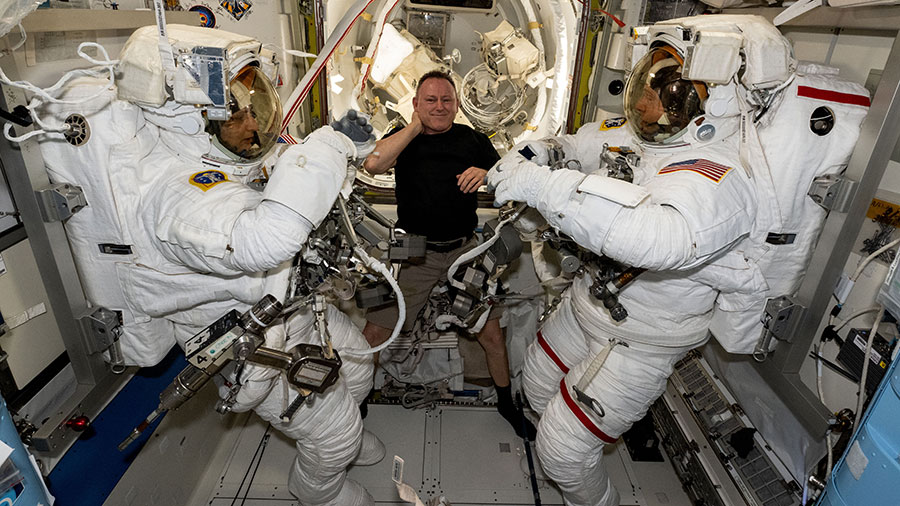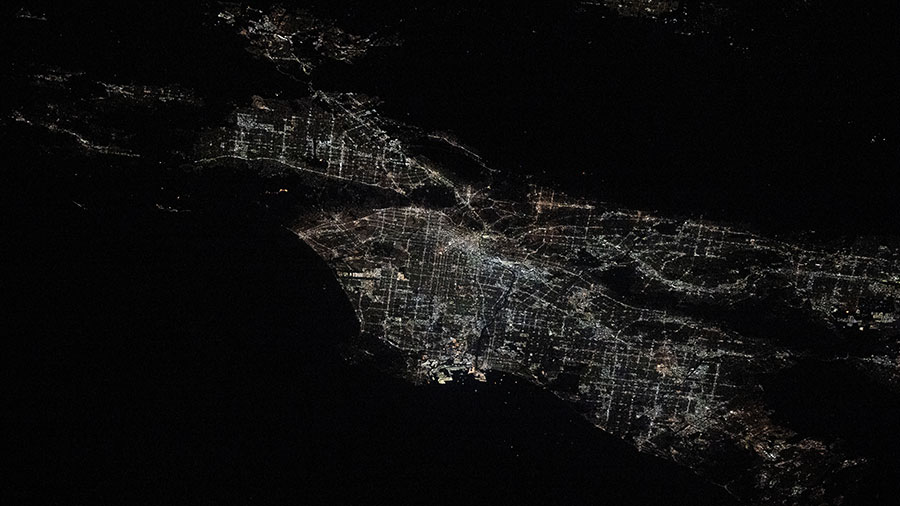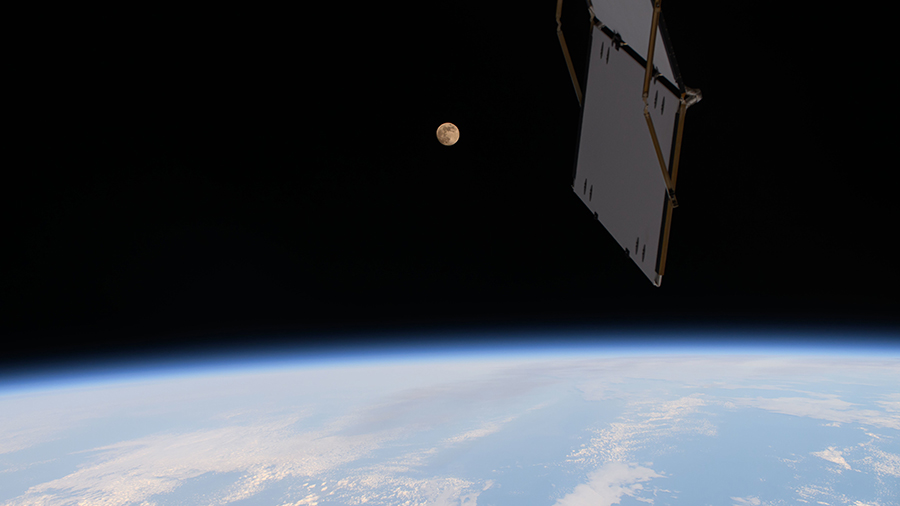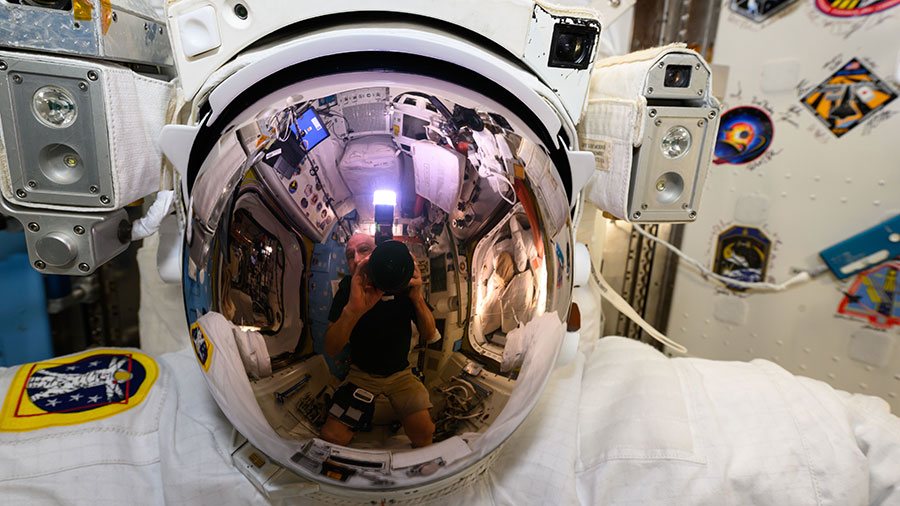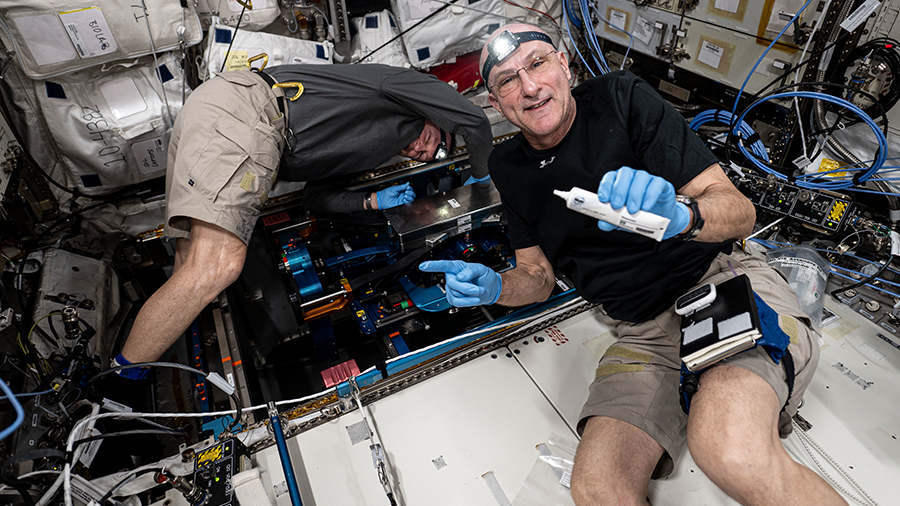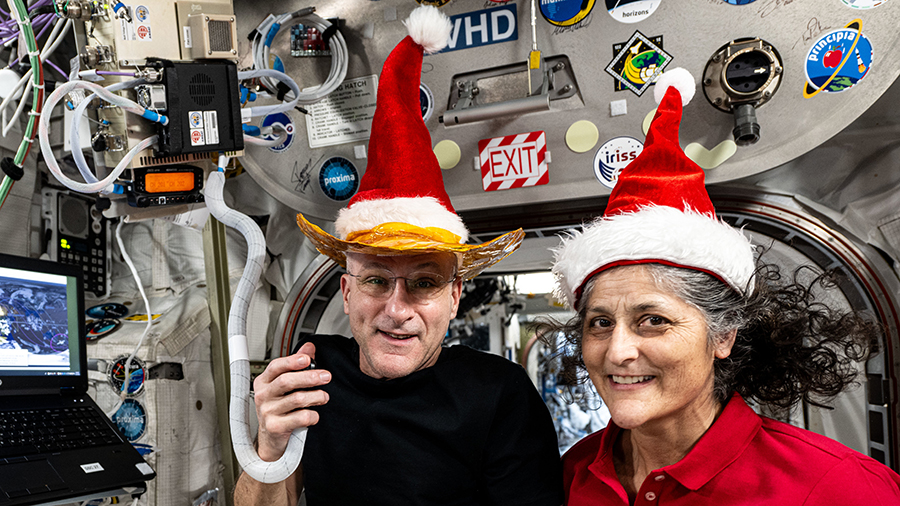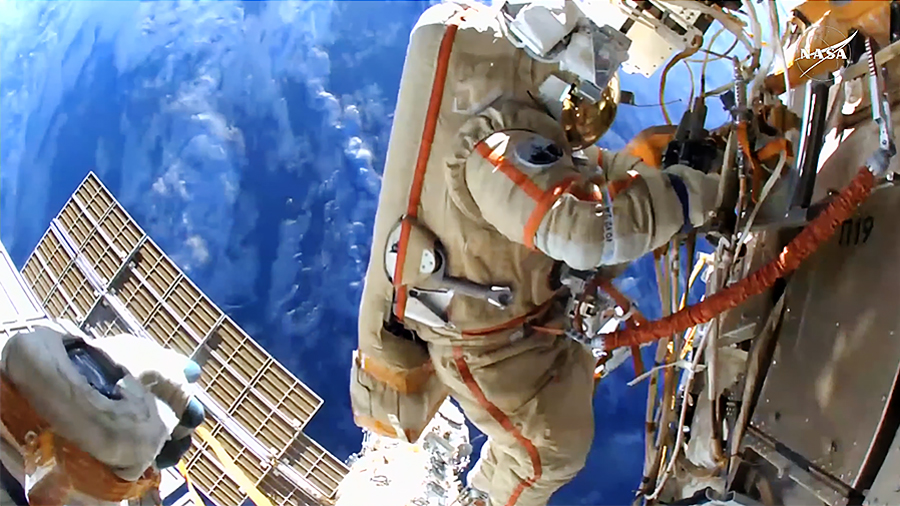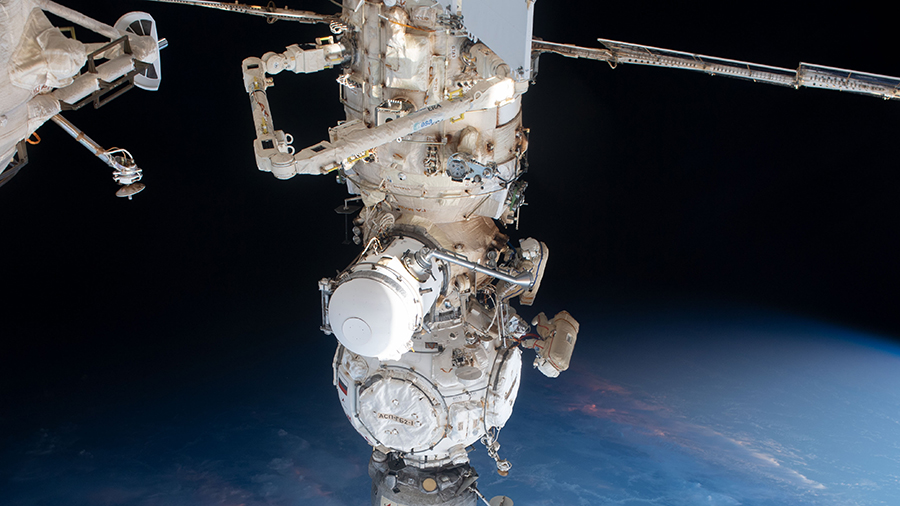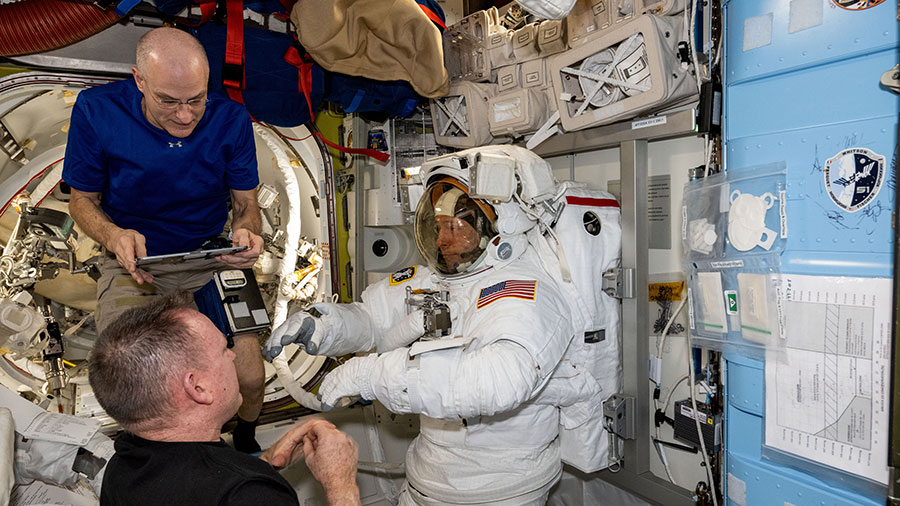
Two NASA astronauts have finalized preparations for the first spacewalk of 2025 to service astrophysics hardware on the International Space Station. The rest of the Expedition 72 crew split the day between assisting the upcoming spacewalkers and keeping up human research.
Flight Engineer Nick Hague and space station Commander Suni Williams, both from NASA, will set their spacesuits to internal battery power at 8 a.m. EST on Thursday beginning a six-and-a-half-hour spacewalk. They will exit the Quest airlock and patch light leaks in the NICER X-ray telescope then ready the Alpha Magnetic Spectrometer for future upgrades. The experienced spacewalking duo will also replace advanced engineering hardware to maintain station orientation and provide navigation data. NASA+ begins its spacewalk coverage at 6:30 a.m. on Thursday.
Hague and Williams started Wednesday in Quest reviewing the procedures they will use to fulfill their spacewalking tasks. The pair also staged spacesuits and organized the specialized tools inside Quest. NASA Flight Engineers Don Pettit and Butch Wilmore assisted with the spacewalking preparations then joined Hague and Williams for a readiness review with mission controllers on the ground at the end of their shift.
Roscosmos cosmonauts Alexey Ovchinin and Ivan Vagner were back on human research duty on Wednesday attaching sensors to their forehead, fingers, and toes measuring how blood flows to the tiniest vessels in microgravity. Scientists want to understand how the human circulatory system in the limbs of crew members adapt to living long-term in microgravity. Flight Engineer Aleksandr Gorbunov took a fitness test pedaling on an exercise cycle while electrodes measured his aerobic and cardiovascular output ensuring his health in weightlessness. All three cosmonauts also continued their orbital maintenance tasks servicing a variety of life support gear throughout the orbital outpost’s Roscosmos segment.
Learn more about station activities by following the space station blog, @space_station and @ISS_Research on X, as well as the ISS Facebook and ISS Instagram accounts.
Get the latest from NASA delivered every week. Subscribe here: www.nasa.gov/subscribe

